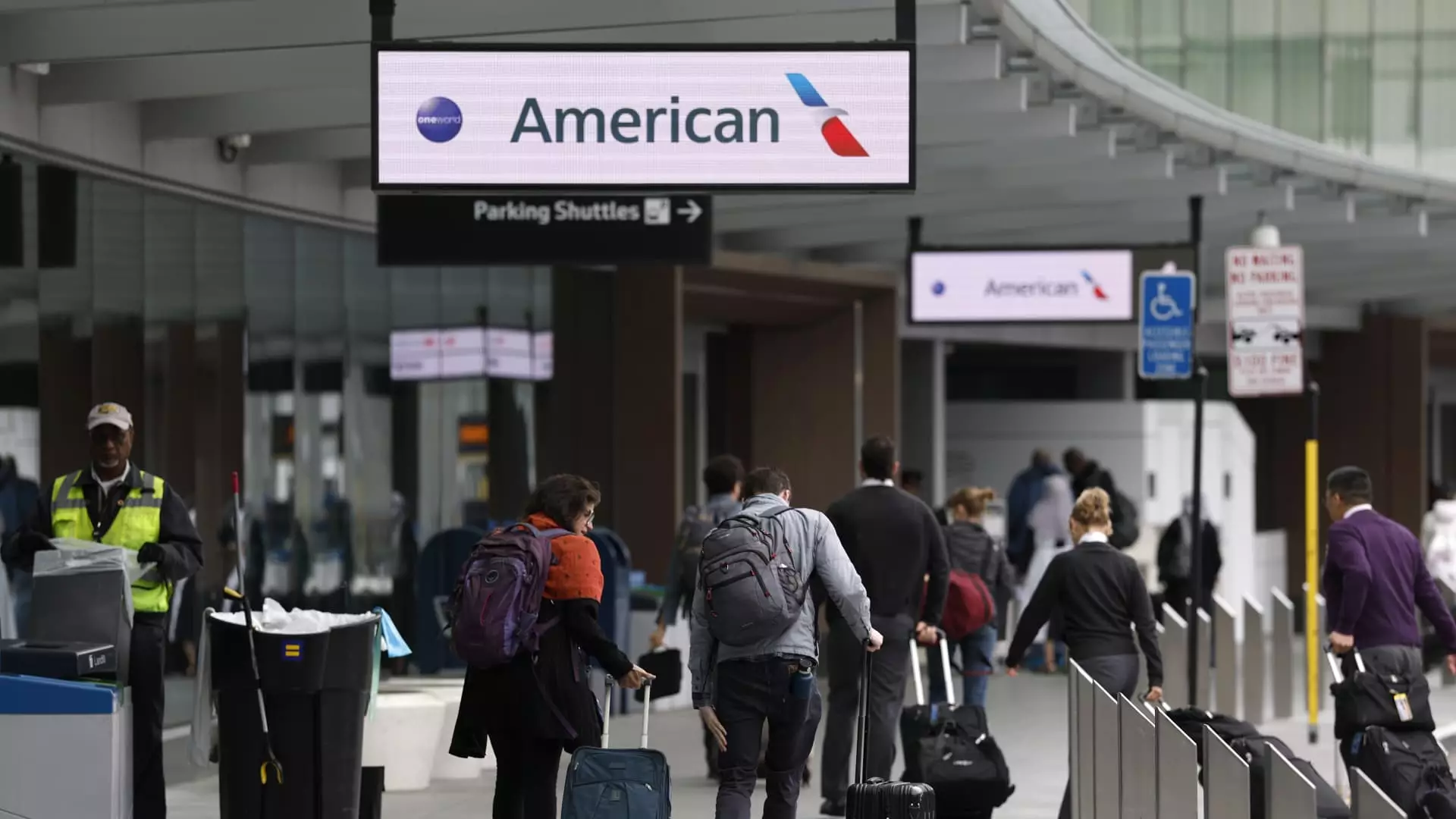As we glide into 2025, the airline industry finds itself caught in a tense and turbulent climate. The once unshakeable confidence expressed by CEOs in the early days of this year has morphed into a dungeon of anxiety and caution. The warnings echoing from the mouths of leaders in aviation—especially American Airlines’ Robert Isom—are not just disconcerting; they are reflective of a much larger narrative: American travelers are tightening their belts amid a backdrop of unpredictability. The recent earnings calls from key players like Delta Air Lines and Southwest Airlines underline a core concern: We may be hurtling toward an economic downturn, and this reality is gripping the industry with unprecedented ferocity.
The Economic Disconnect
True to form, the airline CEOs are attributing the unraveling demand for domestic travel to a plethora of factors, but President Trump’s erratic tariff policies and volatile markets frequently serve as the scapegoats. It raises an inevitable question: How far can we push the middle class before it snaps? In a country where the dream of travel was once a core facet of middle-class aspiration, does it not seem defined by stark irony that this very dream is now subsumed by an atmosphere of economic trepidation? When it becomes a luxury to navigate through life unburdened by the ghosts of financial worry, we stop thinking about that summer getaway and start fearing the next financial shock.
The Seat Glut: A Reminder of Fragility
Airlines, once financial titans, are now battling over a surplus of unsold seat inventory, which is leading to desperate price slashes. The irony is palpable: while they had anticipated a boom during peak travel periods like Easter, they’re now grappling with a landscape of low demand forcing them to cut back capacity growth. The forecast has drastically shifted, as industry giants have pulled their optimistic financial outlooks, replacing them with cautious expectations that mirror the severity of public sentiment. The cuts in ticket pricing may offer short-term relief to travelers but represent a dire second act for an industry that needs rebounding—a sign of a troubling, cyclical reliance on discounted fares.
The Vanishing Corporate Traveler
If a recession is indeed looming, the first casualty is corporate travel—a segment that’s always been the backbone for many airlines. These business-class fliers are key; they book last-minute and pay premium prices, fueling the coffers of airlines when tourism treads on shaky ground. Yet, recent data reveals that corporate travel demand is stagnating, and that trend is as troubling as it is undeniable. The reduction in government travel, an unintended consequence of austerity measures, adds to the bleak outlook. Without corporate fliers, airlines lose their financial lifeblood, which makes the prospect of cheaper tickets not just an inconvenience, but a significant risk.
Rising from the Ashes of Certainty
But amid this squall of uncertainties, a flicker of hope insists on pushing through. As Delta’s CEO Ed Bastian notes, the commercial sector demonstrated promise earlier this year, catching a brief gust of growth before stagnation set in. If there’s a lesson here, it’s about resilience. The ability to weather economic storms doesn’t simply lie in price adjustments or a strong summer season—it requires collective assurance that normalcy will return. The eagerness of consumers to travel abroad stands as testament that citizens still have an innate appetite for exploration. Optimism remains a potent tool; however, it requires a concerted effort from industry stakeholders to ensure it is not extinguished entirely by fear.
Challenges Ahead: A Call for Calm
In an era defined by unpredictability, the airline sector must innovate or be left to navigate through uncertain skies alone. Addressing these challenges head-on instead of relegating responsibility to external forces is imperative. The combo of fluctuating demand and corporate travel’s diminishing influence creates a scenario of bleeding relevance unless airlines make adjustments. Is it possible for the industry to rebound, or have we already witnessed the beginning of the end for what was once a thriving ambition? As we watch the public’s appetite for travel ebb and flow, one truth persists: the collective desire for adventure might not be squashed by external factors, but rather by the internal failures of the airlines to adapt to an ever-evolving landscape.
The path forward demands introspection, realignment, and perhaps a good dose of humility. The skies will only clear when industry leaders are willing to confront the realities of their customers’ fears and navigate through the clouds with transparency and customer-centric strategies.


Leave a Reply